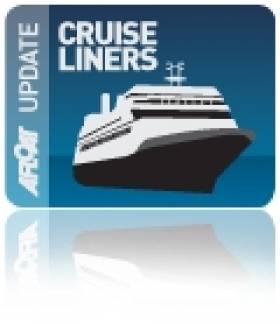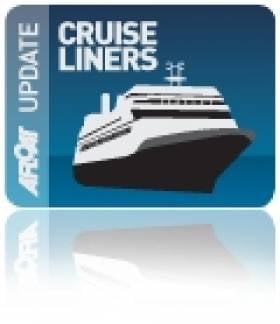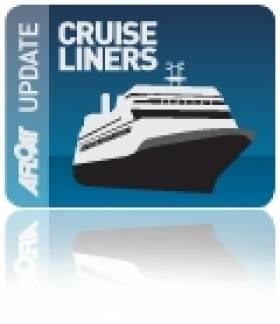Displaying items by tag: Irish cruiseship calls
Plantours Cruises Hamburg Makes Maiden 'Irish' Call
#CAPITAL CRUISE CALLS – Tonight two cruiseships are due to depart Dublin Port, they are Plantours Cruises Hamburg (2007/15,067grt), which made its maiden 'Irish' debut call to the capital, followed by Compagnie du Ponant's Le Diamant, writes Jehan Ashmore.
Plantours is a German based operator and is one of several new entrants providing cruises to Irish ports, as previously reported on Afloat.ie. Among the newcomers are MSC Cruises, whose MSC Lirica finally made her first call to Cobh at the weekend, as an earlier scheduled call this month, was cancelled due to bad weather.
Both the visiting vessels to Dublin Port today, had by coincidence arrived from Penzance, Cornwall and the Hamburg, is no stranger to the capital, having previously operated as Hapag-Lloyd's C. Columbus.
Whereas the French operated Le Diamant (1974/8,282grt) has been in Irish waters throughout this month, with a call to Galway on 17th August. On the same day Voyages of Discovery, which is part of the All Leisure Group, saw their Discovery also make an anchorage call of the mid-western port.
Queen’s Namesake to Retrace Royal Visit
The 90,901 gross registered tonnes cruise ship is to depart her Hampshire homeport, where she is to similarly follow the monarch in that she is scheduled to make a port of call to Dublin first on 9 September and make a call to Cork afterwards.
With a length of 295m / 965-feet the vessel will dock in the centre of the capital port before she sails overnight to make a morning arrival at Cobh, the dedicated cruise terminal for the Port of Cork. She is scheduled to stay at the Cork Harbour town formerly named Queenstown until a 17.00 hour departure.
Her visit coincides with Cork Harbour Open Day, where visitors can view the impressive vessel from the quayside, for more details visit www.corkharbour.ie
Incidentally her near-sister Queen Victoria also called to Dublin in May and the remaining vessel of the Cunard fleet, the 'flagship' liner Queen Mary 2 is also to dock in Cobh three days later after Queen Elisabeth's visit.
- Cobh
- Cork Harbour
- port of Cork
- Cruise Liners
- Cork Harbour Open Day
- Ports and Shipping
- Cobh Cruise Terminal
- Queen Elizabeth II
- Cork Harbour News
- Port of Cork Company
- Cunard Line
- queen victoria
- Port of Cork News
- Queen Elizabeth
- Queen Mary 2
- QM2
- Cruise Liner news
- TransAtlantic Liners
- Cruise ships
- Irish cruiseship calls
- Queen's visit to Ireland
- QV
- QE
- Cunarders
- Cobh Cunarders
- Cobh cruise calls
- Cunard liners
- Cunard cruiseships
- Royal visit to Ireland
- Cobh cruise liners list
Small Luxury Cruiseship Visits Killybegs
In 2004 Killybegs received a significant boost in the completion of a €50m outer harbour with berthing quays totalling 350-metres long so to accommodate the north-west fleet and to include the 'supertrawlers'.
Despite the major port infrastructural investment, Killybegs has seen declining fortunes in the fish industry though in recent year's new business from the offshore exploration and cruise ship industries has assisted in generating new revenue.































































